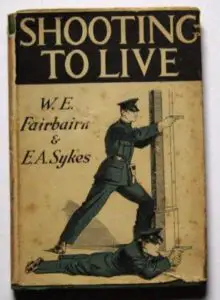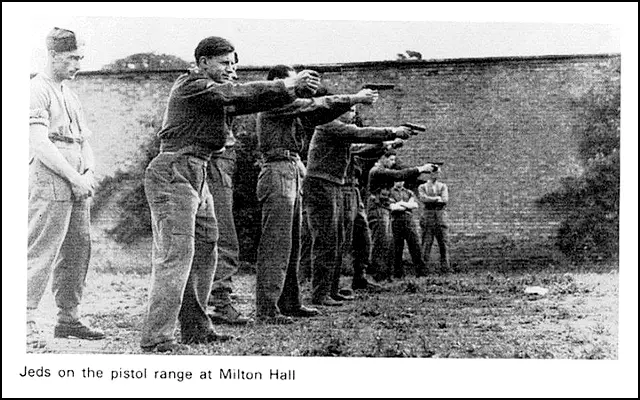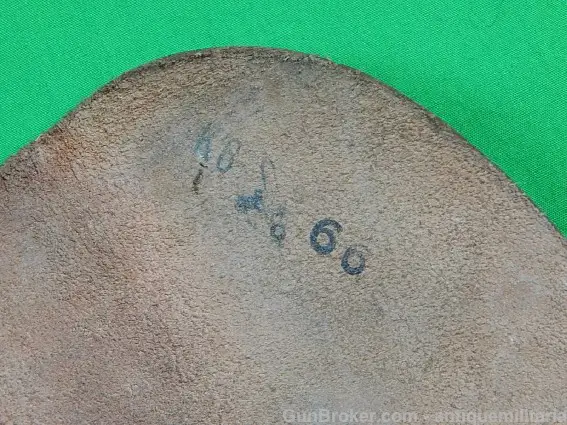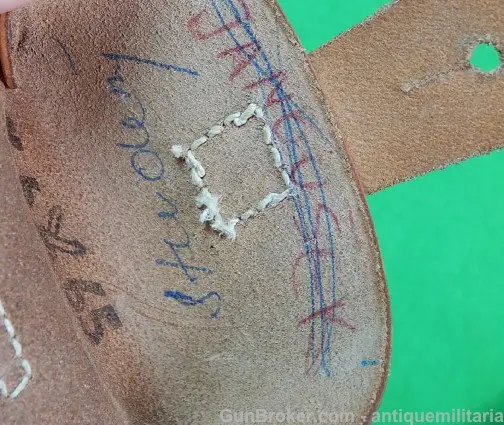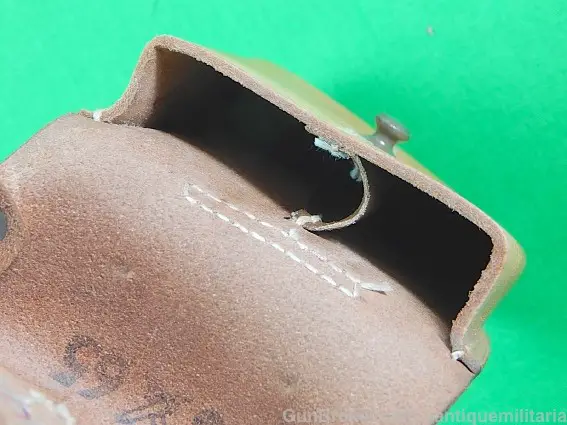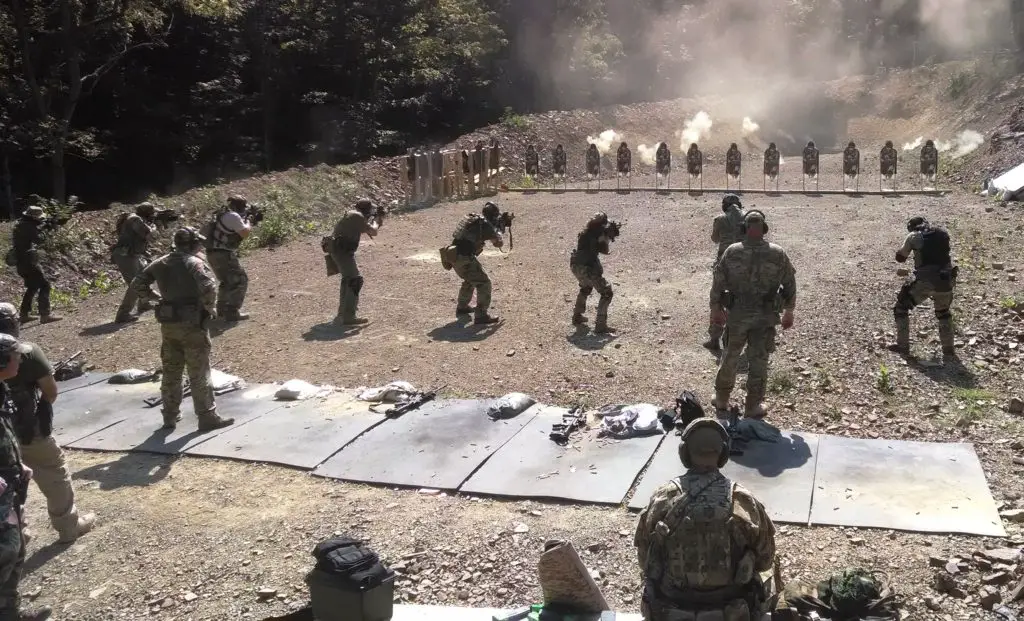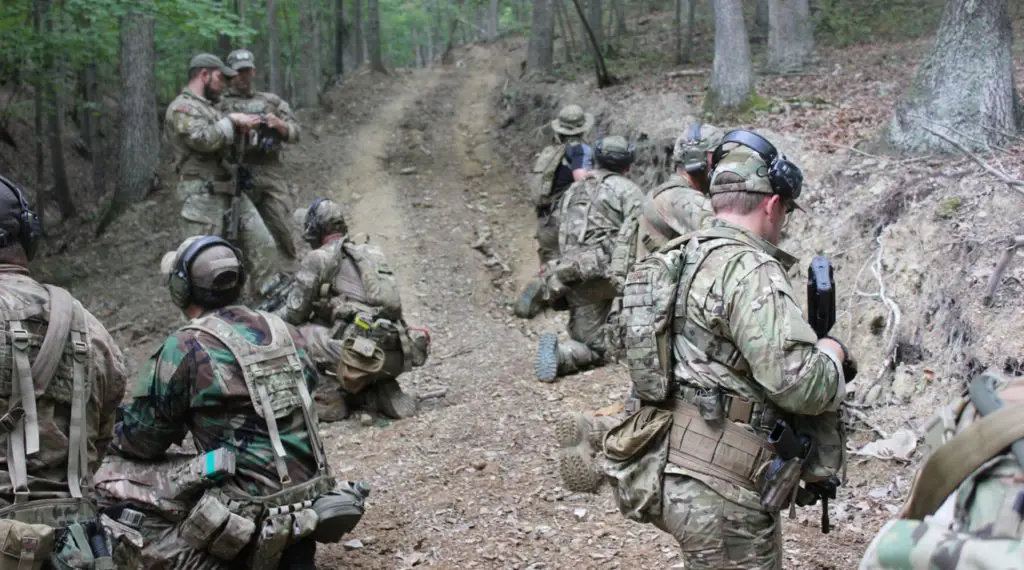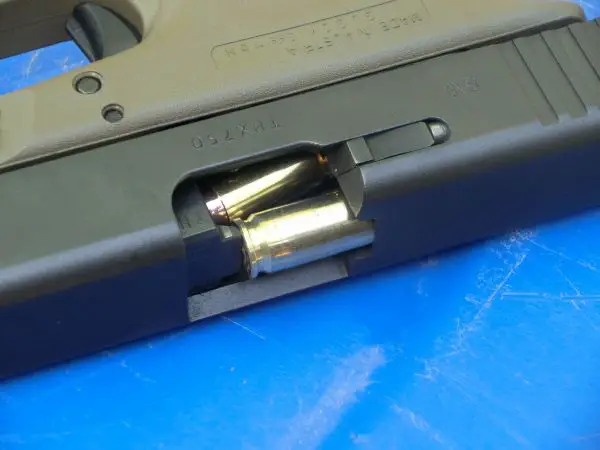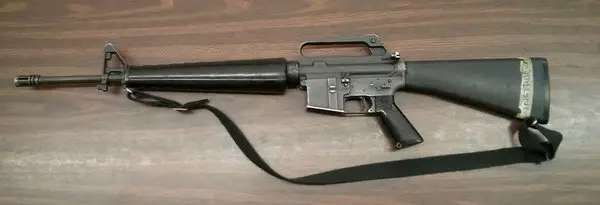Monthly Archives: April 2016
(Yeah, we’re one of the holdouts for the original Greek plural. Most correct in English is likely Octopuses, but we got your attention, didn’t we?)
In any event, an octopus seems to have been used as a weapon in a homicidal assault in Wichita. (Octopus? Wichita? We’ll get to the culinary faux pas in a bit. Focus). The mom’s boyfriend — we note that these crumbs are hardly ever husbands, why is that? — stuffed the rubbery critter into Junior’s throat while mom was out, in an apparent attempt to solve Fermat’s Last Pesky Kid Problem, or something. Local TV:
A 2-year-old boy hospitalized after a small octopus became wedged in this throat showed signs of improvement Thursday as the investigation pressed on, Wichita police said.
The boy, who was brought in to the hospital on Tuesday night, has been upgraded to good condition, is in “a very delicate situation” and shows no immediate symptoms of long-term injury caused by oxygen deprivation to the brain, police Lt. James Espinoza told the Wichita Eagle
The kid has a chance. One’s ability to endure periods of oxygen deprivation declines with age, but is quite astounding in early childhood. It’s all down to how long the poor bastard was trying to breathe octopus instead of free air, a number that is unfortunately, from the standpoint of pure Science, unknowable.
The toddler’s mother told police she returned from work to find her boyfriend giving the child CPR. The boy was not breathing.
Well, having a rubbery stopper in your windpipe will do that, ten times out of ten. This appears to have been the time where he might have mentioned the octopus, if everything was on the up-and-up.
According to ABC affiliate, KAKE, EMS rushed the toddler to a hospital where doctors found and removed the dead octopus – its head about 2 inches in diameter – from the toddler’s throat.
It’s unclear whether the octopus was alive on it’s trip down the That’ll Shut Him Up hole, or whether this is a case of mollusc as well as child abuse.
Police said the octopus was not a family pet and likely was to be used for sushi.
As the old friend who sent this — a chef of some talent — asked in the following text exchange:
Seriously, when in Wichita, order the steak. You can’t go wrong.
Anyway, the hospital thought there was something fishy about the whole story of Junior swallowing Ock while home alone with the boyfriend, one Matthew Gallagher, and dropped a dime on Gallagher to the local flatfeet, who investigated, charged, and arrested the man.
The hospital notified police after the 36-year-old boyfriend’s account about how the boy swallowed the octopus and sustained minor injuries to his face were inconsistent with the evidence, Espinoza said.
via Octopus found lodged in boy’s throat in suspected child abuse case | abc7.com.
And they just lay that out there, “and sustained minor injuries to his face.” Sure, maybe the octopus did it.
One hopes for a speedy recovery for the kid. As for Gallagher, the revolving door courts have already set him free to hurt people again, while pending trial.
No word on whether he has been ordered not to possess aquatic mollusks while under arraignment; it’s probably not in the usual You Got Bail!™ boilerplate.
Weapons Training, Special Training School 103, SOE
The following is a description of firearms instruction at STS 103, which author David Stafford describes as, “one of a network of SOE training schools, and the only one in the Western Hemisphere.” (Other schools were in North Africa, Haifa and elsewhere around the Med, and in Singapore for the Far East). It shows that even 75 years ago, even before the word “mindset” was coined, this abstraction was valued far above practical skills.
Weapons training for OSS and SOE would evolve, but it was based, and remained based, on the work of William Ewart Fairbairn, a man who studied fighting with singleminded intensity, and who along with E.A. Sykes trained the Shanghai colonial police, at a time when Shanghai was a arguably the global leader in applied interpersonal violence and a Shanghai cop had to be quick with hands, feet, knives, and firearms.
As well as being suitably trained for silent killing and on armed combat, the recruits might also have occasion to use weapons, so Camp X gave them weapons training. Sharing the language of the OK Corral, SOE was interested in gunfighting. Since an agent’s life might very well depend on how well he had been taught, instructors would not let a bad shot out of the camp. They instilled in the student mind the impression that he was actually killing the target and to shoot as though his life depended on it. “As with every sport, provided that the principles taught are sound, practice makes perfect.” The principles so diligently instilled in practiced had as their goal, within the constraints imposed by time and the supply of ammunition, “to turn out good, fast, plain shots”. Whether in the use of machine carbines like the Tommy gun or in action with a pistol, the principle was the same: “tremendous speed in an attack with sufficient accuracy to hit the vital parts of a man’s body, for killing at close quarters demands aggression and extreme concentration.”
There were certain obstacles in producing these good, fast, and plain shots. One was the recruits’ previous experience. Instructors presumed that many of their students had some “revolver training in the old style” and, while being careful not to denigrate such skills has might have already been acquired in skeet shooting, had to impart the innovative “instinctive method” of firing.
The first point was that a pistol was not a weapon of self-defence but of attack – it was a combat weapon. Armed with the weapon under consideration, usually a .22 Hi-Standard or .32 Colt, the instructor conjured up a dramatic encounter while on a mission:
Picture in your mind the circumstances under which you might be using the pistol. Take as an example a raid on an enemy occupied house in darkness. Firstly consider your approach. You will never walk boldly up to the house and stroll in as though you were paying a social call. On the contrary, your approach will be stealthy. You will be keyed up and excited, nervously alert for danger from whichever direction. You will find yourself instinctively crouching; your body balanced on the balls of your feet in a position from which you can move swiftly in any direction. You make your entry into the house and start searching for the enemy, moving along passages, perhaps up or down stairs, listening and feeling for any signs of danger. Suddenly on turning a corner, you come face-to-face with the enemy. Without a second’s hesitation you must fire and kill him before he has a chance to kill you.
This method of course meant that an agent would never fire standing straight up, nor in any of the “fancy stances” common to competition shooting, and never have time to use the sights. Since recruits under such conditions might be worried about the accuracy of their name game, they practiced “instinctive pointing”,”the natural way that any man points at an object when he is concentrating”. Students stoodt directly in front of each other and pointed, at the instructor’s commands, to such targets is the exact centre of each other’s stomach, or left foot or right eye. When doing so, no one actually looked down his finger. Rather, “instinctively”, the arm, with the finger extended, came in to the center of the body. Here the finger, and of course its extension the gun, was in position right down the line of eyesight. Such pointing gave the shooter a natural control over direction and elevation when firing.
After demonstrations and practice in holding the pistol or crouching in the firing position, the recruits were ready for some of the more elaborate target exercises using live ammunition. For example, using the .22, students were to imagine that they were outside a German beer cellar, automatics loaded and drawn. In the old style of attack, in order to position themselves for firing, they would have to rely on a totally silent approach. This, of course, was not only dangerous but impossible. SOE felt their method was much superior: “you have reached the doorway of the cellar by a stealthy approach, making no sound whatever. Very quietly turn the handle of the door as far as it will go, And then, preparing yourself for the effort, you kick the door open and kill your targets before they have a chance to realize what has happened.”
If this all sounds rather like a B-grade movie, reads like a spy novel, or looks like a TV SWAT team in action, it’s because SLE instinctive firing was so successful that after the war this innovation swept through commando schools, boot camps, and police academies alike, replacing forever the older shooting style.
Indeed, Rex Applegate, an American instructor trained by Sykes and Fairbairn, would adapt his training notes and syllabi into a postwar book, Kill or Get Killed, that was extremely influential. (The picture above is of Applegate, and it is from this book, which stayed in print for decades).
The gunfighting style of 1942 does look extremely dated today. SOE (and later, OSS) training emphasized instinctive, point shooting, without reference to even the limited, low-profile sights of a wartime or prewar pistol. Nowadays much better sights are used much faster, and pistols are routinely shot two-handed. At the start of World War II, the Japanese alone trained for two-handed shooting; this picture shows that by 1944 Jedburgh teams were training to shoot two-handed, but even long after the war Applegate continued to train one-handed point shooting.
One suspects that William Ewart Fairbairn — by all accounts something of a drip while off duty, having no interests broader than instruction in impartial and immediate unchristian mayhem, and means of delivering same — would approve.
Sources
Stafford, David: Camp X: OSS, “Intrepid,” and the Allies’ North American Training Camp for Secret Agents, 1941-1945. New York: Dodd, Mead & Company, 1987. (pp. 97-99).
A Pathetic Fake on GunBroker
We’ve seen some blatant fakes, but this one retires the trophy.
The auction title: “Nazi Scorpion VZ 61 Holster and Magazine Pouch.” Do you see the problem yet? Here’s the reverse of the holster and pouch:
And here’s the proof of its Nazi bona fides, a gen-you-wine Waffenamt marking!
And here’s another Waffenamt. That Hitler SWAT sticker is way, way clearer on this one.
Have you figured out the problem yet?
The holster and pouch are not for any weapon the Nazis would, or could, have used. They are for the Czech Vz61 Škorpion submachine gun / personal defense weapon, a .32 ACP hybrid pistol/SMG used by some military elements but mostly by internal security elements of the Ministry of the Interior.
While some Czech guns were made and used by Nazis during the Nazi occupation of Czechoslovakia 1938-45, the Nazis left after that (as did, at bayonet point, those ethnic Germans who had invited them in); with the exception of a few war criminals in pokey and a quantity of Nazis-made-good in the graveyards. So you will not find authentic Waffenamt markings on anything made after 1945.
(But you can, and these images suggest someone did, find not-so-authentic Waffenamt stamps on eBay).
The abbreviation Vz stands for the Czech (and Slovak, and a couple other Slavic languages) word Vzor, meaning, “model,” as in, “Model of -“, and of course, the Vz refers to a year.
Anyone daring enough to make a guess as to when a firearm called Vz 61 was adopted?
Next question, is 61 > 45? We may be dealing with someone who is not only a faker, but also suffering from bitchy resting face pre-terminal innumeracy.
Let’s look inside the holster and pouch and see what we can learn there. Hey, there’s a stamp inside the holster flap!
In this stamp, K6 is a manufacturer code, the crossed swords are a Czechoslovak Army marking, and 66 is the year of manufacture.
See, there was this one Nazi who refused to believe the war was over, and hid in the mountains… making holsters.
Next up, the marking inside the pouch for the Škorpion’s spare mags.
So to recap: the gun belonging in this holster was designed in 1961, the mag pouch was made in 1965, and the holster itself in 1966.
But the leatherwares somehow acquired marks from the Waffenamt, an inspectorate defunct for 16, 20, and 21 years respectively at the time. While simultaneously bearing the marks of the postwar Czechoslovak People’s Army.
Last interesting facts: He has this priced a lot higher than a generic Škorpion holster; and, a lot of the seller’s other sales are claimed Nazi stuff, mixed in with admitted replicas.
Don’t take any wooden nickels — or time-traveling Nazi holsters for future guns.
Wednesday Weapons Website of the Week: Max Velocity Tactical
 A long time ago a commenter recommended this site, Max Velocity Tactical, as a Wednesday Weapons Website of the Week. And indeed, we’ve read it from time to time, and it seems to be a pretty good and sensible discussion of fitness, tactics, and so forth. It’s primarily a vehicle for tactical training, both by word and by promoting “Max’s” books and, especially, tactical training classes.
A long time ago a commenter recommended this site, Max Velocity Tactical, as a Wednesday Weapons Website of the Week. And indeed, we’ve read it from time to time, and it seems to be a pretty good and sensible discussion of fitness, tactics, and so forth. It’s primarily a vehicle for tactical training, both by word and by promoting “Max’s” books and, especially, tactical training classes.
The training classes include people with all levels of training and experience, but they tend to look eerily like military training, because that’s what they are, essentially. Here we have shooting on the move, live-fire. (Note the high instructor-student ratio, a must with live fires, especially with people new to the group and each other).
The word “tactical” is rather haphazardly strewn about, these days, but in the case of Max Velocity, it fits. If you attend a course, read a book, visit the forum or read the posts on the website you may indeed learn something about tactics — something of some practical use.
Here is another picture that, apart from the mismatched uniforms, might have been snapped at Dahlonega or Camp Mackall (actually, we had mismatched uniforms in Ranger Class 1-83, because Army students had to wear OD green fatigues or OD-107 jungle fatigues, and the other services could wear ERDL camo or the then-new BDUs).
Max encourages students to review and critique training, and these reviews are available on site. There’s also a discussion forum of value.
You never know what gems will show up. For a single current example, this recent report from one of the site’s associates deals with one of the most necessary and, especially when starting out, unpleasant fundamental skills: rucksack marching. Here’s the briefest taste:
[S]tart some run/walks with some added weight. Don’t start with a full load out. Just like any other progressive training program, start with 15 lbs and maybe 2-3 miles. Work up to a goal weight of say 35 lbs. I would take 4 weeks on this. Then get off the pavement onto the trails. This will really start to condition your feet and ankles and lots of other stuff. At this point you would also switch to your trail runners/light hiking boots (duh) and regular hiking clothes. Another 4 weeks here. Then you take it up hill. This will be real eye-opener. You thought you were in shape. Hell you are in decent shape. But this is a whole ‘nother level. Hard to believe you can be breathing hard, close to red-lining when you are just walking up a hill. But you will. Another hard 4 weeks (this is based on fitness level, see below).
At each stage, drop the weight, and lower the distance again, and work your way back up to goal load and distance targets. Speed becomes a relative thing now, because you are moving as fast as you can sustain, for whatever the terrain allows.
…
I can’t think of any other physical activity that is directly applicable to what we may have to be doing in the future. It is a hell of a lot of work, but it is also immensely satisfying. So get out there and get in touch with your inner Mohican.
The author also makes the point that you should be running. That hits hard here, because Your Humble Bloghost can’t run, and doesn’t even walk so great (when they said don’t turn the MC1-1C below 200 feet, they weren’t just whistling Dixie). Here’s his point:
[M]y running base made a huge difference in being able to switch gears and do serious ruck marching. Your feet, ankles, knees, and other body parts take a serious pounding in this activity. What this tells me is every one who is serious about preparing for uncertain times needs to get out and establish a running-based fitness program. Along with calisthenics, this will prepare you body for the rigors of field work.
If you don’t do this, when it’s go-time, the fitness curve is so steep that your body will inevitably break down, leaving you combat ineffective at the moment you need to be at your best. It’s not just about cardio or muscle strength; it’s also about all that connective tissue being conditioned to take the pounding. Feet, ankles, knees, hips, lower back. This goes double for older folks. All that shit is not as supple as it was before so you have to work harder to make sure you stretch it out and strengthen it to take the load.
Now, that’s all from one post, and that by a guest author (but it got us to figure out where the ALICE is… under a bunch of books in the library… and shake it out and take out some of the weight that was in it for an initial shakedown).
Here’s another guest post: a one-post history of the German invasion of Russia, 1941-44, and its consequences for Germany, which along with the crushing of the Japanese Empire constituted the most complete and thorough defeats of nations since the national exterminations of ancient warfare. (Had Stalin, and some Americans such as Baruch had their way, Germany might have gone the rest of the way to the fate of Carthage and Troy).
Many of the real gems that MVT has to deliver you will have to pay for, like the courses and the training plans. This is how he, and his assistant instructors, pay the bills. It is not very expensive for training that can save your life and that of your family (consider this post on the recurring problem of shooting friendlies, and how to avoid it, complete with video of a real puckerful moment where the camera-equipped shooter ceases fire just for an instant because a teammate runs in front of him, oblivious). Even the free parts of the site are very worthwhile, and that would make their dollar value infinite, wouldn’t it?
There are no great mysteries to combat tactics, now “jaw-dropping shortcut” or “One weird trick,” to use the argot of clickbait. There are fundamental principles, which the tactical training programs of every professional armed service in the world follow, and tactics, techniques and procedures, which are variable so long as they preserve the inviolable principles. If your “militia” shoots now and then on a flat range but can’t organize and conduct a patrol, establish a defensive position, or advance by fire and maneuver, it’s not a militia but a mob. (Call it a “nilitia.”) Max and his guys have been working to close this gap, and they deserve recognition and attention.
Number Five Freakin’ Thousand
This is the five thousandth post to go live on this blog since the first test posts, a few weeks before the go-live date of 1 January 2012.
During that time we’ve had some highs and lows, broken a couple of stories, a couple of guns, and a couple of computers.
Other things that there have been 5,000 of include Lamborghini Aventadors, a milestone passed last month…
… and McDonnell Douglas F-4 Phantoms, a milestone passed many, many years ago.
Some curious facts about the number 5,000 are available at Number Empire.
And here’s another fact (albeit a disputed one) about the number 5,000: according to scientists at the University of Adelaide in Australia, it’s the number of living adults a species requires for long-term viability.
We guess that means the blog will be around a while.
When Guns are Outlawed, Only Outlaws will have Pit Bulls
It’s unclear whether the pit bull (well, technically, the Staffordshire Terrier), killed the guy, because it is indisputable that the pit (etc.) digested large parts of the evidence, to wit, his late owner. Naturally this all eventuates in Anglestan, where guns really are outlawed (especially handguns), but people seemingly have not gotten the good news, and keep on dying anyway. The Telegraph, UK:
Earlier this month District Judge Wendy Lloyd ruled that the animal, known both Buster and Butch, should be destroyed following the grisly discovery last September, when the dog was found to have been feeding on the corpse of its dead owner.
The police supported the owner’s family’s belief the dog posed a danger to the public, the Liverpool Echo reported. James Cullen, representing Merseyside Police, told the at Liverpool Magistrates Court there was a “real risk that this dog, if rehoused, could harm a human being.”
It’s not the dog, it’s the owner, they tell you. The owner who couldn’t decide whether t o name his adorable fluffball Buster or Butch.
They didn’t just leap to the conclusion that Bustbutch was a risk if rehoused. They did some tests:
Following Judge Lloyd’s ruling that the Staffy should be destroyed, a Merseyside Police spokesman said: “This dog was found in a highly agitated state in the home of its owner, who had suddenly died, and was extremely aggressive towards officers who attended.
“Even after a lengthy period in police kennels, where the dog was socialised with other dogs and had regular walks with dog handlers, he unfortunately remained aggressive in certain situations.
“Video evidence shown in court demonstrated the dog’s tendency to bite when rolled on his tummy and picked up – both of which would happen if the dog was adopted as a family pet.
“The police simply cannot take the risk of allowing a dog which has highly aggressive tendencies remain in the community where it could seriously injure someone.
“We offer our condolences to the family of the dog’s owner, who died in sudden circumstances, and we are pleased that this outcome is the one that they wanted.”
But stop the presses — this dogside Dindu Nuffin has his own lobby, in the form of breed buffs and animal supremacists who demand an unconditional pardon for the slobbering maneater.
[S]olicitors acting for Freshfields Animal Rescue Centre and the Senior Staffy Club have lodged appeal, giving the animal a temporary reprieve pending a legal hearing.
“There has been a great deal of public support for this animal, suggesting this animal should not be destroyed,” said solicitor James Parry, representing the organisations acting on Buster’s behalf.
So you’ll take Bustbutch home and tuck him into your own kid’s crib, Mr Parry? Of course not. Lawyers are ever the middleman, and take responsibility for nothing while demanding power over everything. But he wasn’t done, this Better Call Saul of the Old Bailey:
“There was no evidence in this case that the dog killed the deceased.”
Technically true, one supposes. Is the-murderer-ate-the-evidence right up there with mercy-on-my-poor-orphan-client-for-whacking-his-parents, or what?
“We believe the tests applied to check on the animal were not appropriate and outdated. The ‘alpha-role’ was adopted by the doghandler, anticipating the dog was going to bite him – it’s an outdated tactic.
Yes, instead we should all whistle “Greensleeves” and levitate the Pentagon, or something. Or we should do tests that are “appropriate and outdated.”
“Dogs are scavengers by nature, but when they can’t get food, they will get anything that is available to them, as was in this case.”
“Humans, put in the same (starving) position, would do the same.”
True that. There are probably more man dogeaters than dog maneaters, on the planet overall.
The website Good Dog Story, arguing for Buster’s rehabilitation, said: “Staffordshire Bull Terriers … have severely misunderstood reputations, and are in fact some of the absolute best family dogs an owner can find.”
Well, maybe not this owner, but he was unavailable for comment.
via Dog who ate owner receives temporary reprieve from death sentence.
Self Foom: un Splodydope à Paris
Brahim Abdeslam, the splodydope seen here in a clip from French TV station M6, which mostly comprises surveillance footage, was a true suicide bomber. Despite wearing a bomb belt and setting it off in the crowded Comptoir Voltaire bar/restaurant in Paris on 19 November 15, he didn’t manage to kill anybody but himself. On a night where his coreligionists were bagging 130 innocent Frenchmen, it was a pathetic performance.
That’s what Islam counts as a failure: the Islamic sacrament of mass murder, interrupted.
Thwarted, even. No 72 virgins for you, loser.
Islam is totally a religion of peace, which is why the scattered bits and chunks of this low-rent bozo got the hadji equivalent of a state funeral in Schaerbeek district of greater Brussels.
More information (en anglais, s’il vous plaît) at the Daily Mirror.
Names for Malfunctions
“I’ve never had a malfunction on paper.”
On this page at the international website all4shooters, we noted the following paragraph from Andrea Giuntini:
American experts invented names and achronyms for all kind of gun-related malfunctions, yet there isn’t one that suits this. That was definitely not an FTF (“Failure to Feed”), as the round were fed and fired properly, nor an FTE (“Failure to Extract) since, as a matter of fact, the case was extracted and ejected; nor it is a stovepipe malfunction − if it was, the case would be stuck vertically in the ejection window.
May you, ALL4SHOOTERS.COM readers and followers, invent a name for this kind of malfunction? Tell us about it, and about any peculiar kind of malfunction you may have experienced in your everyday shooters’ lives!
The article actually looks into a screwy, one-off malf of a Glock 17, in which a fired casing got turned around backwards and jammed the slide from going into battery on the next round:
We couldn’t duplicate the jam with a G17 and dummy rounds in the office, but Andrea traced it to a piece of metal debris under the extractor (his Glock was brand new).
A gun is a machine, and a machine does the same thing every time, given the same input; therefore, a machine never fails for no reason, and the reason is always discoverable, given the right theory, concept, and inspectional technique. Basic troubleshooting, which worked for Andrea Giuntini and should make a good post here some day. But meanwhile, it got us thinking about what are the types of malfunctions?
Most of what an Internet search will find is the same stuff repeated endlessly, which probably comes, ultimately, from Cooper. We leave finding it in Cooper’s voluminous bibliography as an exercise for the reader; his Commentaries are online, for example.
Cooper, in turn, followed Chinn. But an even earlier taxonomy of malfunctions comes from then-Captain Julian Hatcher and his assistants, Lieutenants H.J. Malony and Glenn P. Wilhelm, at the Machine Gun School of Instruction at Harlingen, Texas in March, 1917.
Jams, Malfunctions, Stoppages
Distinguish carefully between these terms, and use them correctly. Any accidental cessation of fire is a stoppage. It may be due to a misfire, or to the fact that the magazine has been emptied, etc. In this case it is not a malfunction.
A malfunction is an improper action of some part of the gun, resulting in a stoppage. For example, a failure to extract the empty cartridge case.
A jam is some malfunction which causes the mechanism to stick or bind so that it is difficult to move. Do not use the word “Jam” too much. Most troubles with the guns are merely temporary stoppages due to some malfunction, and real jams are comparatively rare.1
An alternative version comes from the Royal Armouries of England and Great Britain. In the 1960s, its standard report format (which we saw in the Vz 58 report) contained this boilerplate key2 to malfunctions:
| ABBREVIATION | STOPPAGE OR MALFUNCTION | DESCRIPTION |
| 1. b.f.c. | Breech Block fails to close. | The round has been fed into the chamber but breech block not fully home. |
| 2. b. f. r. | Breech Block fails to remain to the rear. | When the trigger is released the breech block fails to engage on the sear. |
| 3. d.t. | Double Tap. | When the mechanism of the weapon is set to single shot firing two rounds are fired with one pressure of the trigger. |
| 4. f. e. | Failure tc Eject. | This occurs when the round is correctly fired and fired case is extracted from chamber but not thrown clear of the weapon. |
| 5. f. e. c. | Failure to Extract Fired Case. | This occurs when the round is fired correctly but the fired case is left in the chamber when the breech block moves to the rear. |
| 6. f. f. | Failure to Feed | A conplete failure of the breech block to contact the base of the round and remove it from belt or magazine i.e. breech block closes on empty chamber. Position of round in magazine or belt indicated where possible i.e. 19th |
| 7. hf. | Hangfire | This occurs when the time interval between the striking of the cap by the firing pin and the firing of the round is apparent to fixer. Definite time lag in milli seconds is however used by Ammunition personnel. |
| 8. l. s. | Light Strike | This occurs when the cap of the round receives a slight indentation from the firing pin which is insufficient to ignite the cap composition. |
| 9. p. f. f. | Partial Failure to Feed or Malfeed. | This is a partial failure in that the round has beer taken partially from the magazine or belt by breech block but has not chambered.
Position of round in magazine or belt indicated where possible, i.e. 19th round etc. |
| 10. mf. | Misfire. | This occurs when the cap of the round has been correctlv struck but fails to ignite the charge and fire the round. |
| 11. r. g. (3),(4),(5), etc. | Runaway Gun. No. of rounds in brackets. | When the mechanism of the weapon is set either at single shot or auto and continues firing after release of trigger, |
| 12. s. c. | Separated Case | This occurs when a portion of the fired case is left in the chamber, the remainder being extracted normally. The succeeding round will fail fully to enter the chamber and breech block will fail to close. |
| 13. s. n. r. | Snubbed Nose Round. | This occurs when the nose of the bullet does not enter the chamber correctly but on striking the barrel face is crushed by the foiward movement of breech block. This snubbing may take place at various points on the barrel face or lead in and where possible, is indicated as SN 3 o’clock SN 9 o’clock etc. |
| 14. t. f. c. | Trapped Fired Case. | This occurs when the fired case is correctly extracted but on ejection the fired case rebounds into the mechanism and is trapped between some portion of the moving parts (usually the breech block) and the body of the weapon. |
| 15 | Failures through Breakages | These will obviously cause stoppages and will be described in full. |
The fact is, malfunctions are conceptualized differently by the engineer, by the armorer or gunsmith, and by the firearms operator. From the operator’s-eye view, you don’t need to get wrapped around the axle trying to name them al. What you really need to know is what sorts of malfunctions a particular weapon is prone to, and how to correct them. And there is no better way than experience to master the art of malfunction correction.
Notes
- Hatcher, et. al. p. 1.
- UK Ministry of Defence, Inspectorate of Armaments, Woolwich, Small Arms Branch Testing Section, RSAF Enfield Lock, Form 7248/1. Retrieved from: https://weaponsman.com/wp-content/uploads/2016/04/RSAF-SATB-Small-Arms-Trial-Report-Vz58-1966.pdf
Sources
Hatcher, Julian S., Wilhelm, Glenn P. and Malony, Harry J. Menasha, WI: George Banta Publishing Co., 1917.
UK Ministry of Defence, Inspectorate of Armaments, Woolwich, Small Arms Branch Testing Section, RSAF Enfield Lock, Form 7248/1.
Gun, Copper, Thief
It’s kind of like a game of rock paper scissors, with real-life consequences:
Gun arms cop.
Cop stops thief.
Thief steals gun.
This M16A1, stolen in 2013 from the Philadelphia Police Department (or sold by a crooked cop — the means of its departure is not entirely clear, and it doesn’t seem to have been investigated very hard), remains in criminal hands three years later.
Whistling past the graveyard, neither the FBI nor the ATF makes an effort to collect national statistics on stolen police guns.
This story, from the Philadelphia Inquirer, was occasioned by the critical wounding of Philadelphia patrolman Jesse Hartnett by Islamic terrorist and ISIL volunteer Abdul Shaheed, congregant of the Masjid Mujahideen on S. 60th Street in West Philadelphia, whom the ostriches of the press insist on calling by his prehomicidal name Edward Archer. (Shaheed is the Arabic word for martyr. Mujahideen is the Arabic term for holy warriors — or terrorists, in Islam it’s the same thing).
In the instant story, reporter Stephanie Farr pulls out some recent data, by her own efforts, that the Feds are scrupulously collecting, not.
- The Philadelphia PD and its 6100 officers have lost 32 issued firearms in the last five years to theft or loss. (If there’s any attempt to track officers’ personally owned firearms, it’s not mentioned).
- 9 have been recovered, including Abdul Shaheed’s Glock, which was reported stolen in 2013.
- LAPD’s 9800 officers have lost 7 firearms in the same period, all to theft.
- The embattled Baltimore PD’s 2400 officers have lost 7 firearms in the same period, all to theft.
- Chicago’s 12,000 officers have filed 77 theft and loss reports.
These numbers seem suspect to us, because they appear to be the number of theft and loss incidents, and it seems likely that the number of guns lost is higher. Still, this table reveals some interesting variations. Feel free to check our math.
| Police Firearms Lost to Theft |
PD Sworn Officers |
Thefts (if known) | Thefts Per/1000 officers | Losses (if known) | Losses Per/1000 officers | Total Thefts and Losses |
Total Per/1000 officers |
| Baltimore |
2400 |
7 |
2.92 |
0 |
0 |
7 |
2.92 |
| Chicago |
12000 |
73 |
6.08 |
4 |
0.33 |
77 |
6.42 |
| Los Angeles |
9800 |
7 |
0.71 |
0 |
0 |
7 |
0.71 |
| Philadelphia |
6100 |
27 |
4.43 |
5 |
0.82 |
32 |
5.25 |
The original data were in Farr’s article, we just extended her reporting by tabularizing the data and adding the rates for a useful comparison.
Question: Why such stark differences in loss and theft rate? Or, to put it another way, what’s the difference between what LA is doing and the other major urban PDs? Bear in mind that the difference might just be reporting categories or other statistical gamesmanship, something intrinsic to police management in these CompStat days.
All these cities, of course, practice fairly hardcore gun control, making thefts from police an appealing logistical pathway for would-be terrorists like Shaheed seeking arms. One is reminded the Boston Marathon bombers Dzhokar “Flashbang” Tsarnaev and his brother Tamerlan “Speedbump” Tsarnaev murdered MIT Police Officer Sean Collier to try to steal his service pistol. (A second cop, Boston PD’s DJ Simmons, died a year later from injuries received in the Watertown shootout, something the press usually forgets in their crush on the surviving murderer).
In totalitarian states, theft from the authorities and the euphemistically named “battlefield recovery” have been instrumental in arming resistance groups, also. (Who are, from the viewpoint of the authorities, naturally, criminals). One set of data that has never been systematized is the photographs of European resistance movements in World War II, but certainly the resisters are usually seen with quantities of Nazi as well as prewar and allied-airdropped arms.
Police are not enthusiastic about more rigid control measures on department firearms, or to be held responsible for losing them, administratively speaking. They certainly feel personal responsibility: retired ATF officer Jay Wachtel admitted to Farr that his own service pistol was stolen from him and was missing for years.
I was on pins and needles for three years because I was afraid it would be used in a homicide. When it got recovered, I just had this huge sense of relief.
It seems to be classified in the Homer Simpson File of Life: “Stuff that just happens.” Jim Burch of the Police Foundation thinks that cops shouldn’t be held responsible for their stolen guns:
Preventing the theft of a firearm can be very difficult, particularly when your car and daily attire or uniform essentially advertises to the criminal element that firearms are likely present in your home
So, Burch believes, cops should get a bye on thefts, although he concedes that they have an issue with losses. In Philadelphia, though, neither seems to have career consequences for a cop.
Philadelphia police would not say how many officers had been disciplined over the issue.
The logical inference of that “refusal to say” is that the number is zero. To put it another way, There is no evidence that careless storage of, careless loss of, or even outright corruption in the unlawful transfer of department or personal firearms is a matter of the least concern to Philadelphia PD managers.
Only now are indictments coming in for crooked Philadelphia cops who were apparently dealing in departmental firearms for years. (It could be worse. In New York, cops exposed for taking bribes to sell pistol permits are still reporting to work and being paid, and only the bribe payer has been charged).
At the time the M16 came up missing, Commissioner Charles H Ramsey cut a bold figure. He made a strong statement.
We will get to the bottom of it one way or another, I guarantee that.
Three years later, all the PD has done is issue that statement. Doesn’t look so strong, does it?
Even with the near-murder of Hartnett,
When Guns are Outlawed, Only Outlaws will have Dust Destroyer
Know what else it destroys, besides dust?
You.
If you’re a dumb-ass.
One more experiment in the ongoing parade of bold experimenters trying to Respirate Gases Other That Oxygen, with the usual results one can expect from a bold experiment unmediated by a sufficient (or second-grade) level of knowledge. Trish Nadolny at the Philadelphia Daily News:
An employee at the Chestnut Hill store called police at 12:11 a.m. after managers, realizing a woman had been locked in the bathroom since 9:40 p.m., gained entry with a crowbar.
Investigators found 10 empty cans of “Dust Destroyer” keyboard cleaner in the trash can and two more in the woman’s handbag, police said. The warning label on the cans, which police said the woman had stolen from the store, warn that “inhaling contents may be fatal.”
via Woman found dead in Staples with 10 empty aerosol cans – philly-archives.
Another news story reports that the death was ruled a suicide. It also contains this small tidbit of advice:
The warning label on the can states, “inhaling contents may be fatal.”
You don’t say.
It may not have gotten her a write-up in the Huffington Post but now she’s one post-huffing ghost.

Kevin was a former Special Forces weapons man (MOS 18B, before the 18 series, 11B with Skill Qualification Indicator of S). His focus was on weapons: their history, effects and employment. He started WeaponsMan.com in 2011 and operated it until he passed away in 2017. His work is being preserved here at the request of his family.



